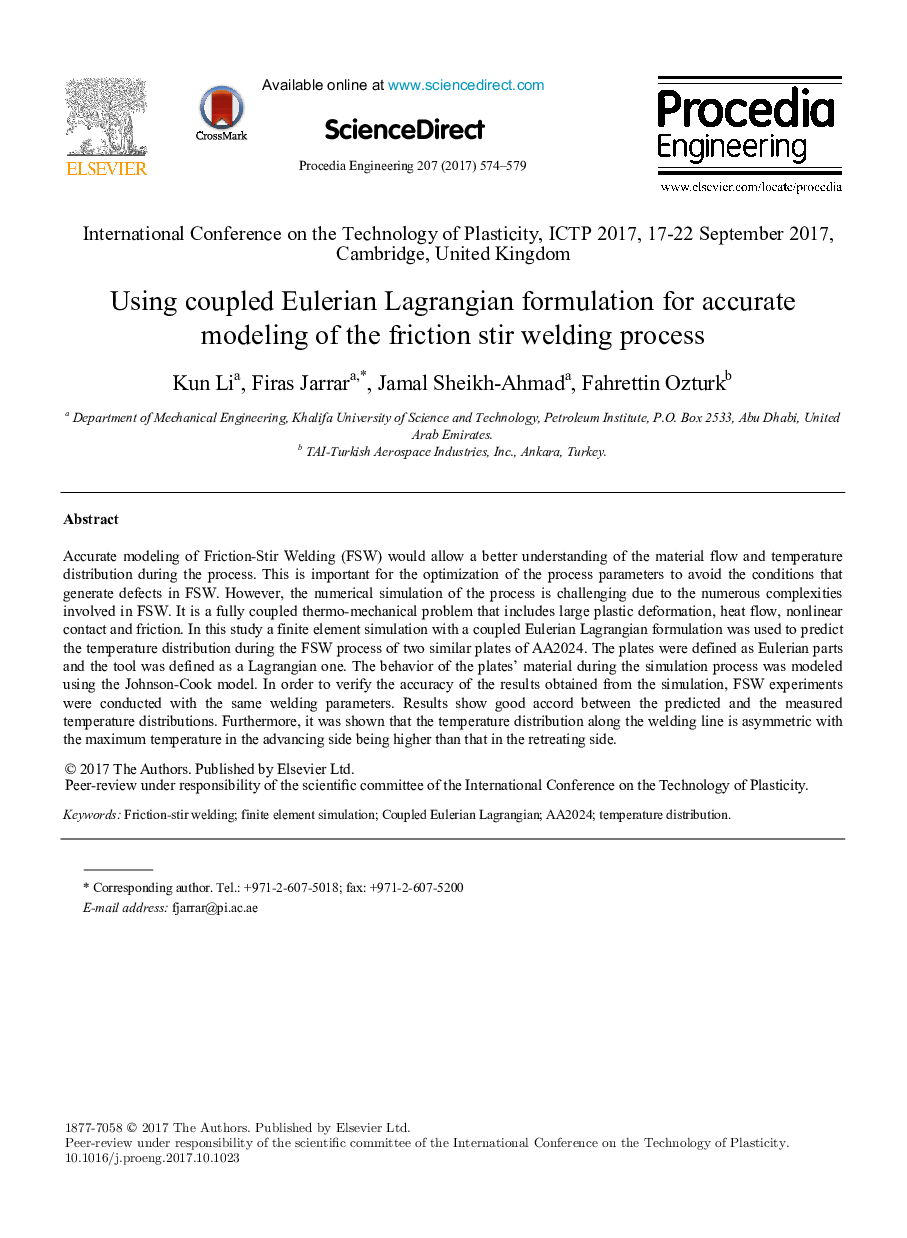| Article ID | Journal | Published Year | Pages | File Type |
|---|---|---|---|---|
| 7227274 | Procedia Engineering | 2017 | 6 Pages |
Abstract
Accurate modeling of Friction-Stir Welding (FSW) would allow a better understanding of the material flow and temperature distribution during the process. This is important for the optimization of the process parameters to avoid the conditions that generate defects in FSW. However, the numerical simulation of the process is challenging due to the numerous complexities involved in FSW. It is a fully coupled thermo-mechanical problem that includes large plastic deformation, heat flow, nonlinear contact and friction. In this study a finite element simulation with a coupled Eulerian Lagrangian formulation was used to predict the temperature distribution during the FSW process of two similar plates of AA2024. The plates were defined as Eulerian parts and the tool was defined as a Lagrangian one. The behavior of the plates' material during the simulation process was modeled using the Johnson-Cook model. In order to verify the accuracy of the results obtained from the simulation, FSW experiments were conducted with the same welding parameters. Results show good accord between the predicted and the measured temperature distributions. Furthermore, it was shown that the temperature distribution along the welding line is asymmetric with the maximum temperature in the advancing side being higher than that in the retreating side.
Keywords
Related Topics
Physical Sciences and Engineering
Engineering
Engineering (General)
Authors
Kun Li, Firas Jarrar, Jamal Sheikh-Ahmad, Fahrettin Ozturk,
